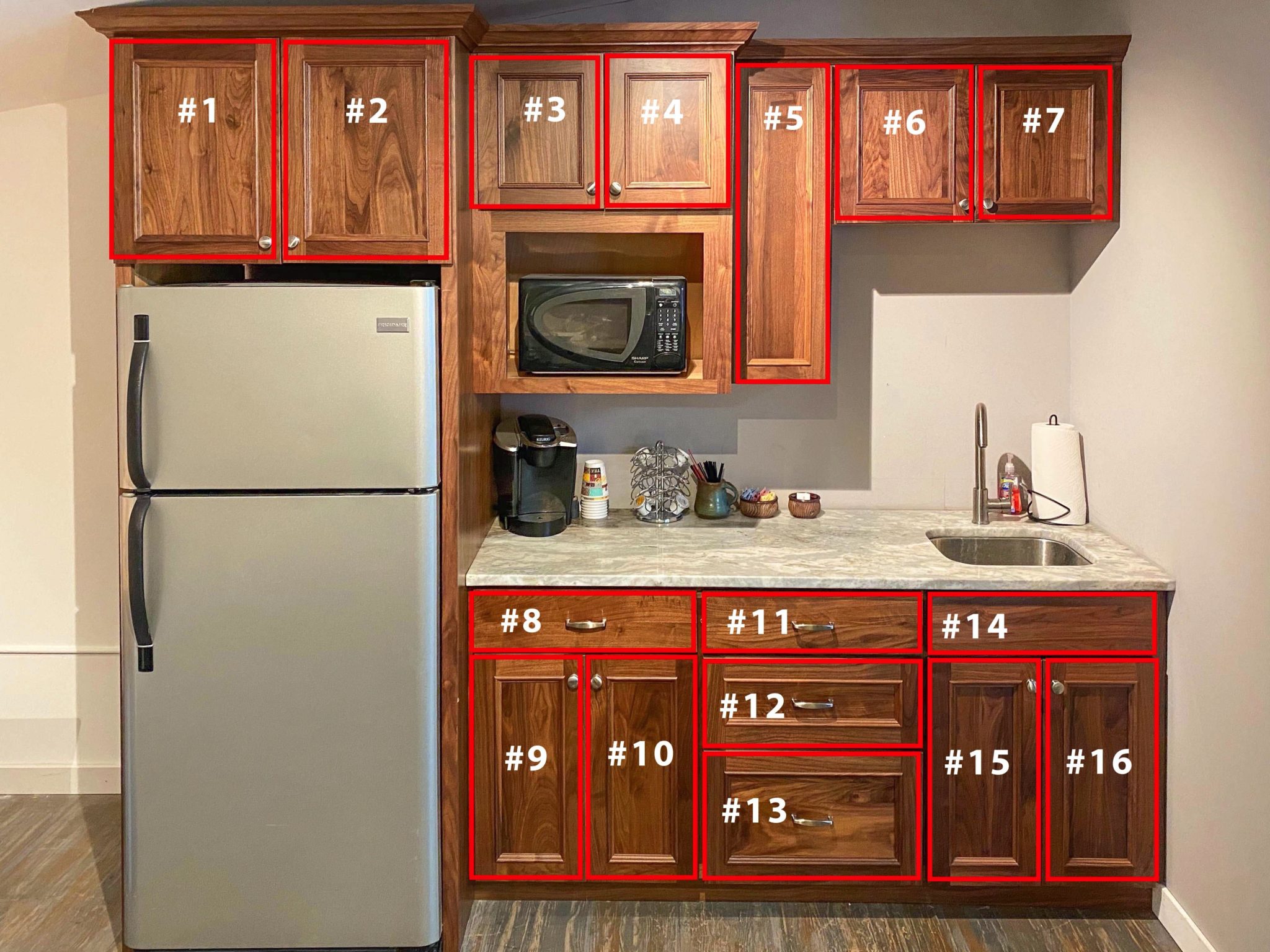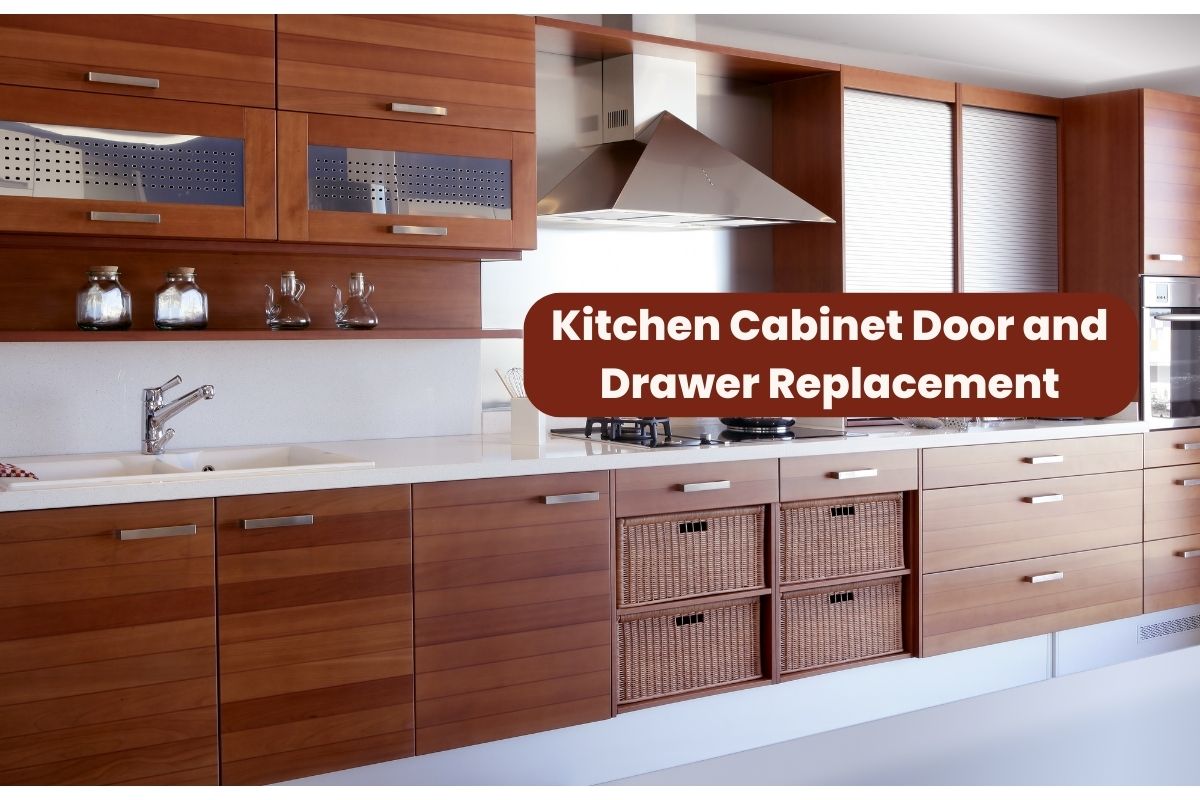Benefits of Replacing Kitchen Cabinet Doors with Cork

Upgrading your kitchen cabinets with cork doors can be a smart and stylish decision. Cork offers a unique blend of aesthetics, durability, and sustainability, making it an excellent choice for modern kitchens.
Aesthetic Appeal of Cork Cabinet Doors
Cork’s natural beauty and versatility create a warm and inviting ambiance in any kitchen. Its unique, textured surface adds visual interest and depth, while its warm, earthy tones complement a wide range of kitchen styles. From contemporary to rustic, cork seamlessly integrates with various design schemes.
Durability and Longevity of Cork in a Kitchen Environment, Replacing kitchen cabinet doors cork
Cork is remarkably durable and resilient, making it an ideal material for kitchen cabinet doors. Its natural composition provides excellent resistance to moisture, heat, and scratches, ensuring that your cabinet doors remain in pristine condition for years to come. Cork’s inherent flexibility also allows it to withstand minor impacts without denting or cracking.
Sustainability and Eco-Friendly Aspects of Cork
Cork is a sustainable and eco-friendly material harvested from the bark of the cork oak tree. The harvesting process does not harm the tree, as the bark regenerates naturally. Cork is also a renewable resource, making it a responsible choice for environmentally conscious homeowners.
Cost of Cork Cabinet Doors Compared to Other Materials
Cork cabinet doors are generally more affordable than solid wood doors, but they can be more expensive than standard laminate or melamine doors. However, considering the durability, sustainability, and aesthetic appeal of cork, it represents a valuable investment in the long run.
Different Cork Finishes and Textures
Cork offers a wide range of finishes and textures to suit various design preferences. From natural, unsealed cork with its rustic charm to polished, lacquered finishes for a more modern look, cork provides a diverse palette of options. Additionally, cork can be embossed or engraved to create unique patterns and textures.
Installing Cork Cabinet Doors

Replacing your existing cabinet doors with cork is a fun and rewarding DIY project. It involves a few essential steps, and with the right tools and materials, you can achieve a stylish and unique look for your kitchen.
Materials and Tools
Having the right tools and materials is crucial for a successful installation.
- Cork panels: Choose a thickness that matches your existing cabinet doors, usually 1/4 inch or 1/2 inch.
- Cabinet door frames: These will be reused from your existing doors.
- Measuring tape: For precise measurements of the cork panels.
- Utility knife: To cut the cork panels to size.
- Wood glue: To attach the cork panels to the door frames.
- Clamps: To secure the panels while the glue dries.
- Sandpaper: To smooth out any rough edges and create a seamless finish.
- Cork sealer: To protect the cork from moisture and stains.
- Paintbrush: To apply the cork sealer.
Measuring and Cutting Cork Panels
Accurate measurements are essential for a perfect fit.
- Measure the width and height of each cabinet door frame.
- Transfer these measurements to the cork panels.
- Use a utility knife to cut the cork panels to the measured dimensions.
- Ensure clean and straight cuts for a professional finish.
Attaching Cork Panels to the Door Frames
- Apply a thin layer of wood glue to the back of the cork panels.
- Carefully position the cork panels on the cabinet door frames.
- Use clamps to secure the panels in place until the glue dries completely.
- Remove the clamps after the glue has set.
Finishing and Sealing Cork Doors
- Sand the edges of the cork panels to create a smooth and even surface.
- Apply a coat of cork sealer to protect the cork from moisture and stains.
- Let the sealer dry completely before handling the doors.
- For a more polished look, consider applying a second coat of sealer.
Design Considerations for Cork Cabinet Doors: Replacing Kitchen Cabinet Doors Cork

Cork cabinet doors offer a unique blend of natural beauty, sustainability, and practicality, making them a compelling choice for modern kitchens. Beyond their functional benefits, cork’s inherent versatility allows for diverse design possibilities, enabling homeowners to create kitchens that reflect their personal style and aesthetic preferences.
Exploring Different Styles and Designs for Cork Cabinet Doors
Cork’s natural texture and warm tones provide a blank canvas for various design approaches. Here are some styles and designs that can be explored:
- Natural Finish: The simplest and most authentic approach, showcasing the inherent beauty of cork’s natural grain and variations in color. This option creates a minimalist and organic feel, ideal for contemporary or rustic kitchens.
- Stained Finish: Cork can be stained in a variety of colors to achieve a desired look. This allows for a wider range of aesthetic possibilities, from rich, dark hues to light, airy shades, enabling integration with different kitchen color palettes.
- Patterned Designs: Cork can be cut and shaped to create intricate patterns, adding a touch of visual interest and sophistication to the cabinet doors. Geometric designs, floral motifs, or even personalized patterns can be incorporated.
- Cork Veneer: For a more subtle and cost-effective approach, cork veneer can be applied to existing cabinet doors. This method allows for the introduction of cork’s natural texture and warmth without completely replacing the doors.
Integrating Cork with Existing Kitchen Cabinetry
When incorporating cork cabinet doors into an existing kitchen, it’s crucial to consider the overall design aesthetic and the existing cabinetry. Here are some strategies for seamless integration:
- Matching Finishes: If the existing cabinetry has a painted finish, consider painting the cork doors in a similar color to maintain a cohesive look. For cabinets with a wood veneer, choose a cork stain that complements the existing wood tones.
- Accent Doors: Instead of replacing all cabinet doors, consider using cork for a few accent doors. This creates a visual focal point and adds a touch of unique character to the kitchen. For example, use cork doors for the upper cabinets or for the island cabinets.
- Hardware Choices: Choose hardware that complements the natural warmth of cork. Metal finishes like brushed nickel, brass, or copper can create a sophisticated and modern look. Consider using handles with a minimalist design to allow the cork’s texture to take center stage.
Designing a Kitchen Layout That Features Cork Cabinet Doors
Cork cabinet doors can be incorporated into various kitchen layouts, adding a touch of warmth and natural beauty to the space. Here are some design ideas:
- Open Shelving: Combining cork cabinet doors with open shelving creates a visually interesting and functional layout. Cork doors can be used for lower cabinets, while open shelving can display decorative items or frequently used kitchenware.
- Island with Cork Doors: A kitchen island with cork cabinet doors becomes a natural focal point. The warm tones of cork can create a welcoming atmosphere and enhance the island’s visual appeal.
- Wall-Mounted Cabinets: Wall-mounted cabinets with cork doors can add a touch of elegance and practicality to a kitchen. They can be used to store dishes, glasses, or other kitchen essentials.
Creating a Mood Board Showcasing Various Cork Cabinet Door Designs
A mood board can help visualize the potential of cork cabinet doors in different kitchen styles. Here are some design elements that could be included:
- Images of Cork Cabinet Doors: Include images of various cork cabinet door styles, showcasing different finishes, patterns, and hardware choices.
- Kitchen Color Palettes: Explore different color palettes that complement the warm tones of cork. Consider using neutral colors, earthy tones, or bright accents.
- Kitchen Countertop Materials: Include images of countertop materials that would work well with cork cabinet doors. Natural stone, butcher block, or quartz countertops can complement the natural aesthetic of cork.
- Kitchen Backsplash Ideas: Explore different backsplash materials that can enhance the overall design. Tile, brick, or natural stone backsplashes can add visual interest and texture.
Examples of How Cork Cabinet Doors Can Be Used in Different Kitchen Styles
Cork cabinet doors can seamlessly integrate into various kitchen styles, adding a touch of warmth and personality. Here are some examples:
- Contemporary Kitchen: Cork cabinet doors with a natural finish can create a minimalist and modern aesthetic. Pair them with sleek hardware and a neutral color palette for a contemporary look.
- Rustic Kitchen: Cork cabinet doors with a stained finish can complement the warmth and natural elements of a rustic kitchen. Use a dark wood stain to create a cozy and inviting atmosphere.
- Transitional Kitchen: Cork cabinet doors can bridge the gap between traditional and modern styles. Consider using a light stain and simple hardware for a transitional look.
Replacing kitchen cabinet doors cork – Replacing kitchen cabinet doors with cork can offer a unique and eco-friendly aesthetic. While you’re thinking about home improvements, consider incorporating subtle lighting into your bedroom with bedroom crown molding with lights. This elegant touch can transform your space, just like the natural warmth of cork can elevate your kitchen.
Replacing kitchen cabinet doors with cork can add a touch of warmth and texture to your space. While you’re making updates, consider adding a personal touch to your bedroom with bedroom bedside pendant lights for a cozy and inviting ambiance.
Back in the kitchen, cork cabinet doors can also be a practical choice, offering a durable and easy-to-clean surface that complements a variety of kitchen styles.
